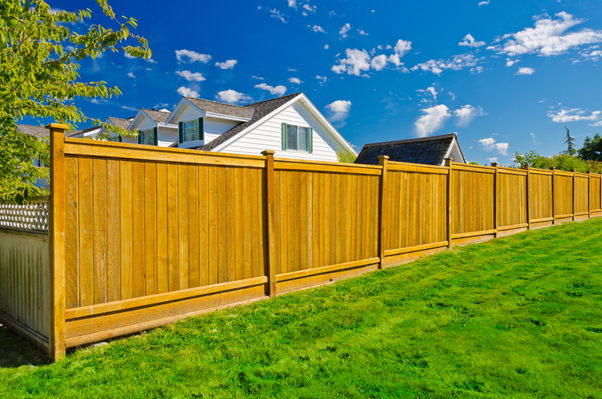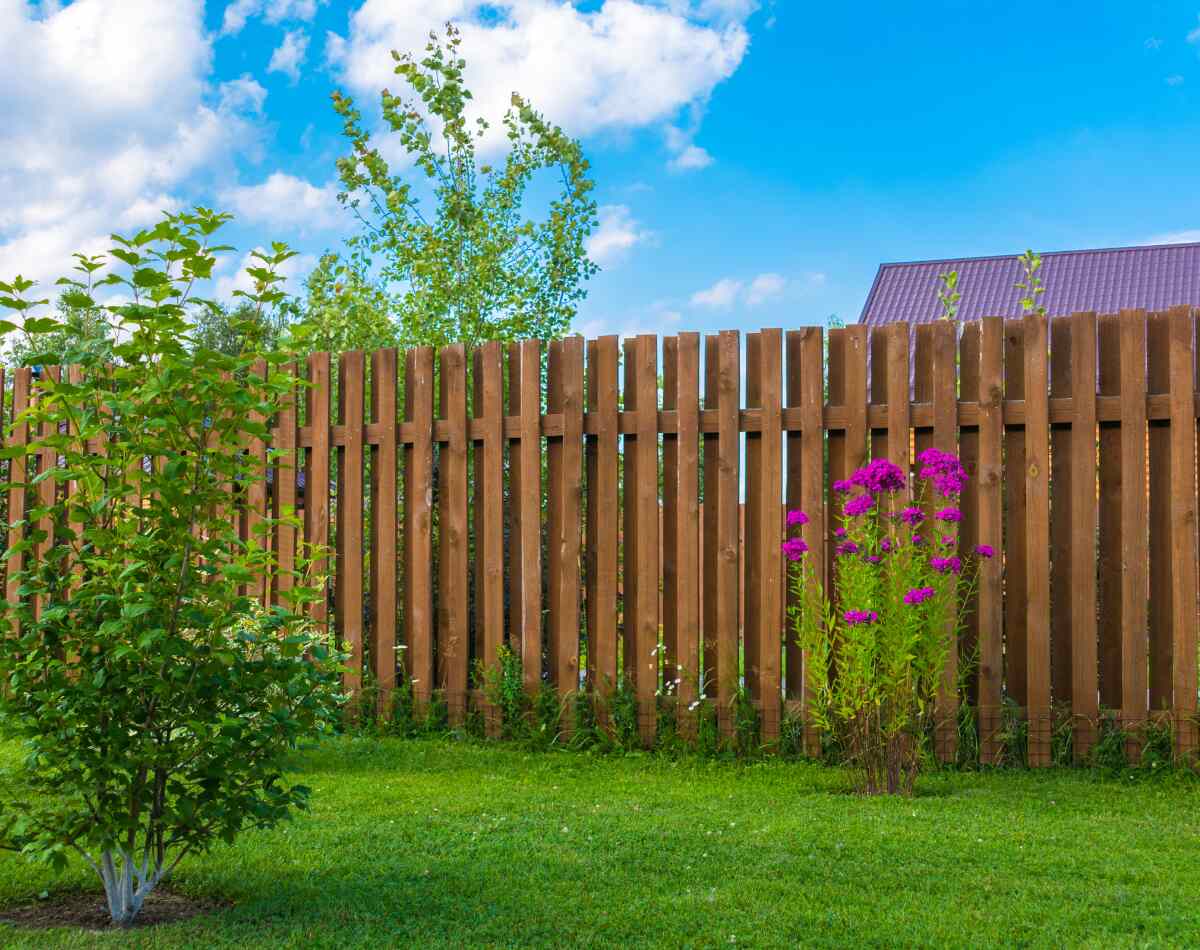All Categories
Featured
When it pertains to mounting a new fencing, working closely with an experienced fence contractor is crucial to attaining a style that suits both your visual preferences and useful demands. Whether you want a fence for privacy, security, or to improve the visual allure of your residential or commercial property, collaborating with a skilled expert will aid you bring your vision to life. Below's a step-by-step guide on just how to function with a secure fencing contractor to create a fencing that fits your details needs.
![]()
Personal privacy: A high, solid fencing that blocks the view from next-door neighbors or passing website traffic. Security: A fence that keeps trespassers, family pets, or children risk-free, such as a lockable gate or a bulletproof barrier. Aesthetic Allure: A fencing that boosts your residential or commercial property's aesthetic allure, probably with a decorative or ornamental style. Border Meaning: A simple fence that notes residential property lines and divides your room from others. Review your priorities with the professional so they can much better recognize your objectives. Be clear about any kind of added features you might desire, such as custom-made gates, ornamental article caps, or gain access to points.
Wood: Supplies a natural appearance and exceptional privacy but needs extra upkeep with time. Vinyl: Sturdy, low-maintenance, and offered in numerous styles, though much less personalized than wood. Metal: Wrought iron, steel, or light weight aluminum are ideal for protection and an advanced appearance yet can be extra costly. Chain-Link: An affordable option that offers protection yet lacks privacy and design. Composite: A mix of timber and plastic, offering toughness with minimal upkeep. Your service provider will certainly use referrals based on your budget plan, climate, and visual choices. They'll help you make a decision whether a classic timber fence, a modern vinyl layout, or a strong steel fencing is the most effective selection for your building.
Inclines or unequal surface: If your land has a slope, the contractor may recommend a tipped fencing style or customized remedies to make sure the fencing looks even and collaborates with the land. Barriers: Trees, shrubs, or yard features might influence where the fence can be put. These will certainly need to be addressed to avoid unnecessary elimination of landscape design or other frameworks. Gain access to points: If you need entrances for automobiles or pedestrians, talk about placement and style with your specialist. By examining the residential property's design, the professional can create a fence that's both functional and aesthetically pleasing.
If licenses are called for, your specialist can aid with the documentation and ensure that all legal requirements are fulfilled. This will certainly help prevent expensive delays or fines throughout installation.
Personalized Gates: Whether for a driveway or pedestrian gain access to, entrances can be a vital part of the fence design. Talk about the dimension, product, and securing mechanism with your specialist. Ornamental Touches: From ornamental message caps to lattice accents or finials, these tiny details can elevate the look of your fencing. Elevation and Design: Depending on your personal privacy or security requirements, you could select a greater fencing or a particular design (e.g., picket, personal privacy, or ranch-style) Your professional must offer layout choices and supply understanding right into how each feature will impact the total performance and aesthetic of the fence.
![]()
The timeline for setup will rely on variables such as the intricacy of the design and the materials chosen. Usually, the professional will certainly provide an estimated beginning date and completion date. Go over any kind of target dates or time constraints you may have, and guarantee that both parties settle on a timeline that works.
Materials and design requirements. Total expense and payment routine. Timeline and anticipated completion day. Service warranty or guarantee details. Any type of other agreed-upon terms (e.g., cleaning and post-installation support) Testimonial the agreement meticulously and ask concerns concerning anything that's uncertain. When everything is in order, authorize the contract and prepare for setup.
If you discover any type of disparities between the plan and the installment, address them promptly with your service provider to ensure the last product fulfills your assumptions.
Conclusion. Designing a fence that fits your requirements involves thoughtful planning and clear communication with your service provider. By clearly describing your objectives, comprehending offered products, and teaming up on the design, you can produce a fencing that boosts your building's visual, privacy, and protection charm. With the best contractor on your side, the process can be smooth, making sure that the final item is both stunning and useful for several years ahead.

- Begin with Clear Goals and Assumptions. The very first step in designing a fence is recognizing your requirements. Believe concerning the reasons you're installing the fence and what you intend to accomplish with it. Some typical goals include:
Personal privacy: A high, solid fencing that blocks the view from next-door neighbors or passing website traffic. Security: A fence that keeps trespassers, family pets, or children risk-free, such as a lockable gate or a bulletproof barrier. Aesthetic Allure: A fencing that boosts your residential or commercial property's aesthetic allure, probably with a decorative or ornamental style. Border Meaning: A simple fence that notes residential property lines and divides your room from others. Review your priorities with the professional so they can much better recognize your objectives. Be clear about any kind of added features you might desire, such as custom-made gates, ornamental article caps, or gain access to points.
- Pick the Right Materials. The materials you choose for your fence will certainly impact its appearance, maintenance, and resilience demands. With your goals in mind, research the very best materials and discuss them with your professional. Common materials consist of:
Wood: Supplies a natural appearance and exceptional privacy but needs extra upkeep with time. Vinyl: Sturdy, low-maintenance, and offered in numerous styles, though much less personalized than wood. Metal: Wrought iron, steel, or light weight aluminum are ideal for protection and an advanced appearance yet can be extra costly. Chain-Link: An affordable option that offers protection yet lacks privacy and design. Composite: A mix of timber and plastic, offering toughness with minimal upkeep. Your service provider will certainly use referrals based on your budget plan, climate, and visual choices. They'll help you make a decision whether a classic timber fence, a modern vinyl layout, or a strong steel fencing is the most effective selection for your building.
- Understand Your Building Design. Your professional will require to evaluate your land to identify the finest fence style. The layout will affect decisions such as the fencing's elevation, placement, and the kind of products utilized.
Inclines or unequal surface: If your land has a slope, the contractor may recommend a tipped fencing style or customized remedies to make sure the fencing looks even and collaborates with the land. Barriers: Trees, shrubs, or yard features might influence where the fence can be put. These will certainly need to be addressed to avoid unnecessary elimination of landscape design or other frameworks. Gain access to points: If you need entrances for automobiles or pedestrians, talk about placement and style with your specialist. By examining the residential property's design, the professional can create a fence that's both functional and aesthetically pleasing.
- Know Neighborhood Codes and Laws. Prior to moving on, check neighborhood zoning laws, constructing codes, and community limitations. Several areas have laws on fencing elevation, material kinds, and positioning. Your fence specialist will know with local regulations and can help make sure that your design adheres to these regulations.
If licenses are called for, your specialist can aid with the documentation and ensure that all legal requirements are fulfilled. This will certainly help prevent expensive delays or fines throughout installation.
- Work Together on Design Functions. Currently comes the enjoyable component-- making your fence. Collaborate with your specialist to choose the information that will certainly individualize the layout to your preference. You may intend to include aspects like:
Personalized Gates: Whether for a driveway or pedestrian gain access to, entrances can be a vital part of the fence design. Talk about the dimension, product, and securing mechanism with your specialist. Ornamental Touches: From ornamental message caps to lattice accents or finials, these tiny details can elevate the look of your fencing. Elevation and Design: Depending on your personal privacy or security requirements, you could select a greater fencing or a particular design (e.g., picket, personal privacy, or ranch-style) Your professional must offer layout choices and supply understanding right into how each feature will impact the total performance and aesthetic of the fence.

- Wrap up the Budget Plan and Timeline. After narrowing down the design, it is necessary to go over the budget plan and timeline for installment. Your service provider must offer a comprehensive quote that includes the cost of materials, labor, and any added attributes you've asked for. Be certain to clarify any type of costs for unforeseen problems, such as difficult soil problems or the requirement for unique equipment.
The timeline for setup will rely on variables such as the intricacy of the design and the materials chosen. Usually, the professional will certainly provide an estimated beginning date and completion date. Go over any kind of target dates or time constraints you may have, and guarantee that both parties settle on a timeline that works.
- Review and Authorize the Contract. Your specialist will give an agreement outlining all the details of the task once you're pleased with the style, timeline, and spending plan. The contract ought to include:
Materials and design requirements. Total expense and payment routine. Timeline and anticipated completion day. Service warranty or guarantee details. Any type of other agreed-upon terms (e.g., cleaning and post-installation support) Testimonial the agreement meticulously and ask concerns concerning anything that's uncertain. When everything is in order, authorize the contract and prepare for setup.
- Monitor the Installation Process. Throughout the installation process, remain in touch with your service provider to ensure that the work is being accomplished according to the agreed-upon strategy. While you don't need to oversee every action, regular check-ins can help ensure that any issues are addressed promptly.
If you discover any type of disparities between the plan and the installment, address them promptly with your service provider to ensure the last product fulfills your assumptions.
Conclusion. Designing a fence that fits your requirements involves thoughtful planning and clear communication with your service provider. By clearly describing your objectives, comprehending offered products, and teaming up on the design, you can produce a fencing that boosts your building's visual, privacy, and protection charm. With the best contractor on your side, the process can be smooth, making sure that the final item is both stunning and useful for several years ahead.
Latest Posts
Discover the Perfect Ceramic Tile Flooring at Carpet Interiors Floor & Home
Published Apr 19, 25
1 min read
Get Your Car Fixed Fast - Fix Your Car with Montclare Auto Repair Right Away
Published Apr 19, 25
2 min read
Optimize Your Cost savings with WyHy's Certificate Rates
Published Apr 19, 25
1 min read
More
Latest Posts
Discover the Perfect Ceramic Tile Flooring at Carpet Interiors Floor & Home
Published Apr 19, 25
1 min read
Get Your Car Fixed Fast - Fix Your Car with Montclare Auto Repair Right Away
Published Apr 19, 25
2 min read
Optimize Your Cost savings with WyHy's Certificate Rates
Published Apr 19, 25
1 min read